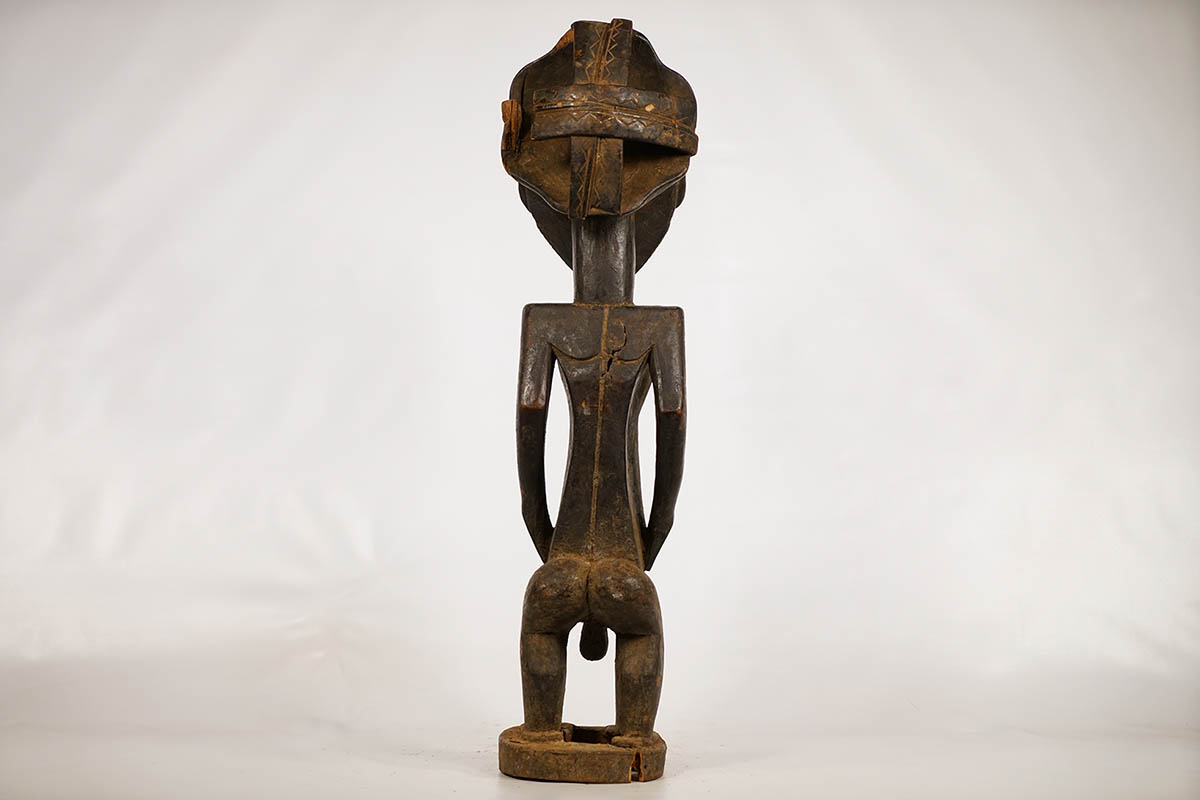This beautiful Luba statue from DR Congo features a nude standing male figure with a dignified facial expression. The figure measures 31.5 inches tall and weighs 12.5 pounds. This piece would make a wonderful addition to any home or collection. Part of the coiffure on the back has broken and there is minor cracking, scuffing and general wear and tear throughout – please inspect photos carefully.
Beautiful Male Luba Statue 31.5″ – DRC – African Art
Original price was: $325.00.$162.50Current price is: $162.50.
Sold

| Type of Object | Figure, statue |
|---|---|
| Country of Origin | DR Congo |
| Ethnicity | Luba |
| Material | Wood, Pigment |
| Approximate Age | Unknown |
| Height (Inches) | 31.5" |
| Width (Inches) | 8” |
| Depth (Inches) | 9.5" |
| Weight (Pounds) | 12.5 lbs |
| Overall Condition | Piece of coiffure broken. Cracking, scuffing and wear and tear. |
You must be logged in to post a review.
Tribe Information
About the Luba People
“The Luba empire was founded in 1585 in the Upemba depression by King Kongolo. His nephew and successor, Kalala Ilunga, rapidly expanded the kingdom to encompass all the territories on the upper left bank of the Lualaba River. At its peak, about one million people, living in several tribes, were paying tribute to the Luba king. At the end of the 19th century, with the advance of the Ovimbudu people from Angola and the raids of the East African Muslim slavers, the empire weakened and, in fact, collapsed when Belgian colonials took control.
With the Assistance of a court of notables, called Bamfumus, the king, known as the Mulopwe, reigned over his subjects through clan kings called Balopwe/ These clan kings could symbolically become the Mulapwe’s son which created client states throughout the empire. A secret society, Bambudye, kept the memory of the Luba empire alive and permeated throughout Luba territory, bonding the diverse populations together. The Luba empire economy was complex – it was based on a tribute system and the redistribution of resources from agriculture, fishing, hunting and mining. The production of salt and iron was under the king’s control.”
Source:
Baquart, Jean-Baptiste. The Tribal Arts of Africa. New York: Thames and Hudson Inc. 1998. Print.







Reviews
There are no reviews yet.